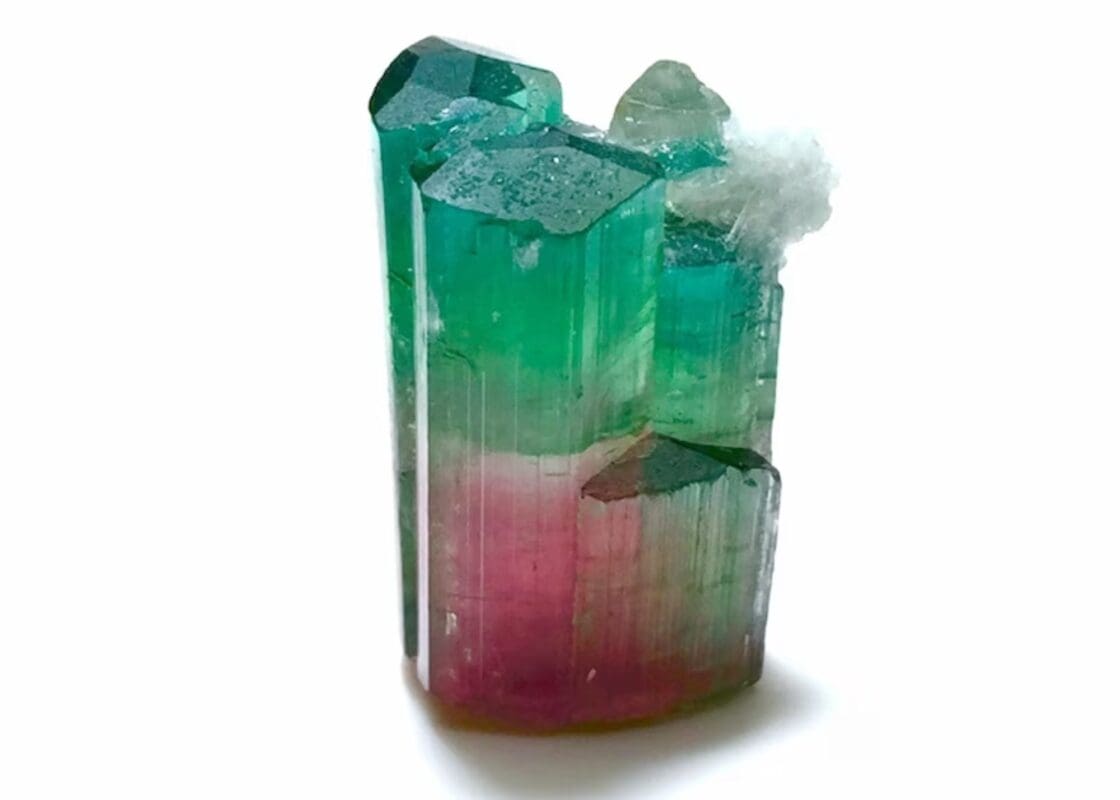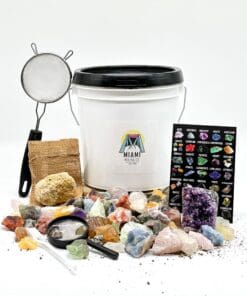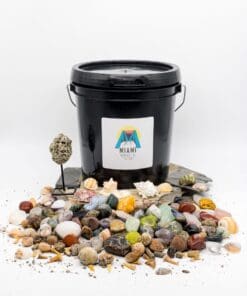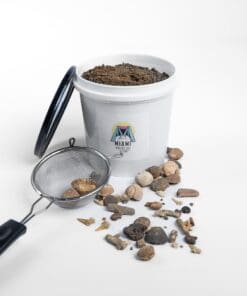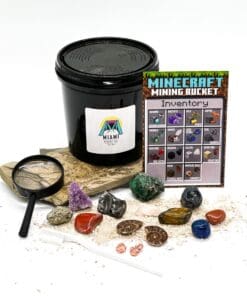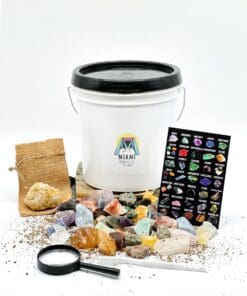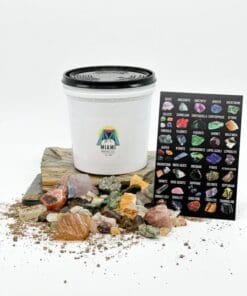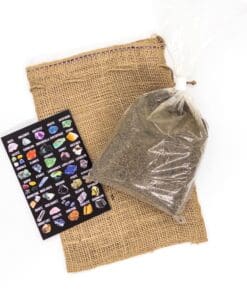Gem Mining Washington: From Historic Finds to Modern Pursuits
Washington, a state known for its breathtaking landscapes and vast forests, is also a treasure trove for gem enthusiasts. From shimmering opals to vibrant garnets, the state boasts an array of precious stones waiting to be unearthed. This article explores the many facets of gem mining in Washington, from its history to the best spots for discovery.
The Most Popular Gemstones in Washington
Washington’s geology offers a diverse array of gemstones, both common and rare, which continue to captivate both novice and seasoned collectors. Here’s a breakdown of these gems:
Rare Gemstones Found in Washington

| Gemstone | Description |
|---|---|
| Ellensburg Blue Agate | A highly sought-after gemstone known for its unique shades of blue, ranging from pale sky blue to deep azure. |
| Green Tree Agate | Characterized by its vibrant green moss-like inclusions against a clear or milky white background. |
| Watermelon Tourmaline | A unique tourmaline variant that exhibits green and pink hues, reminiscent of a watermelon slice. |
| Pyrite Suns | Thin, flat discs of pyrite, sometimes called pyrite dollars, with a radiating pattern resembling the sun. |
| Washington Opal | An opal variant exclusive to Washington, known for its brilliant play-of-color against a translucent or transparent base. |
Common Gemstones Found in Washington
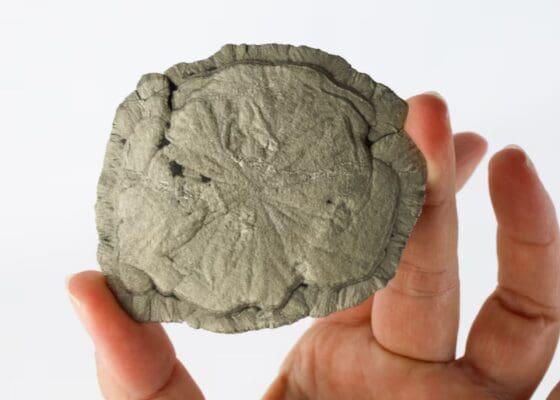
| Gemstone | Description |
|---|---|
| Petrified Wood | Fossilized remains of ancient trees, which have turned into stone over millions of years. |
| Jasper | A form of chalcedony, which comes in a myriad of colors, often exhibiting banded patterns. |
| Common Agate | Chalcedony variant, often found in various colors with banded, speckled, or mossy patterns. |
| Quartz Crystals | Clear, hexagonal crystals often found in Washington’s mountain regions. |
| Garnets | Reddish-brown to deep red gemstones, often found in metamorphic rocks. |
| Gold | Precious metal often found in riverbeds and old mining areas. |
| Hematite | A metallic gray or black stone, often used in jewelry and ornaments. |
| Carnelian | A reddish variety of chalcedony, known for its translucent, glowing appearance. |
| Nephrite Jade | A dense, green stone highly valued in carving and jewelry-making. |
| Calcite | Found in a variety of crystal shapes and colors, often transparent to translucent. |
Each of these gemstones has its own unique history and significance in Washington, making gem hunting in the state a truly enriching experience.
Top Gem Mining Locations in Washington
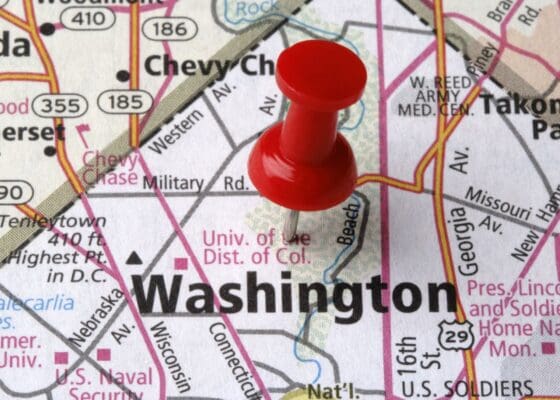
- Hansen Creek – Situated in the heart of the Cascade Mountains, Hansen Creek is renowned for its magnificent quartz crystals. Nestled near North Bend, the site is open year-round, though accessibility can be challenging after heavy snow. There are no fees associated with collecting here, but a Discover Pass may be required for parking.
- Red Top Mine – An absolute treat for those seeking the famed Ellensburg Blue agate. Located near Cle Elum, the mine has no set operating hours but is most accessible during spring and summer. A nominal fee might be charged for access.
- Walker Valley – This gem-rich region, close to Mount Vernon, is celebrated for its deposits of jasper and agate. Open year-round, Walker Valley does require a Discover Pass for parking.
- Stevens County Agate & Jasper – Situated in Northeast Washington, Stevens County is a haven for agate and jasper enthusiasts. As it’s predominantly situated on public lands, access is generally open, though a Discover Pass may be needed.
- Spokane Bar Sapphire Mine – While not exclusively in Washington (located on the border with Montana), it’s a sought-after destination for sapphire enthusiasts. The mine typically operates from May to October and charges a fee for sifting through their gravel piles.
- First Creek – Near Chelan, this location is known for garnets. It’s best visited during spring and summer, with no specific operating hours and no set fees, but access permissions might be required from local authorities.
- Liberty Gold Mine – A historical gold mining town in Kittitas County, Liberty offers gold panning opportunities. It’s open year-round, but it’s advisable to visit during warmer months. There might be nominal fees associated with some panning areas.
- Miller River – Located near Skykomish, this river is a hotspot for various minerals, including gold and quartz. While there are no set hours or fees, a Discover Pass may be required for parking.
- Money Creek – Nestled in the Cascades near Skykomish, Money Creek offers opportunities to find gold and quartz crystals. Best visited during spring and summer, access is open, though a Discover Pass might be necessary.
- Rock Candy Mountain – Situated near Olympia, this destination offers chances to discover geodes, agates, and a variety of minerals. There are no designated operating hours, but it’s best visited during daylight. A fee might be charged for guided tours or specific collecting areas.
While all these sites are incredible opportunities for gem enthusiasts, always ensure to check with local regulations and landowners for permissions, fees, and any updated information before embarking on your gem-hunting journey.
History of Gem Mining in Washington

The gem mining history in Washington is a fascinating tapestry that intertwines with the very roots of the state’s formation. For centuries, long before the arrival of European settlers, indigenous tribes of the region recognized the value of the lands’ mineral wealth. Native American tribes such as the Yakama, Spokane, and the Nez Perce used local gemstones like jasper, agate, and even quartz for tools, ceremonial items, and adornments.
With the influx of European exploration and settlement in the late 18th and early 19th centuries, word of Washington’s mineral abundance began to spread. The mid-19th century witnessed a series of minor gold rushes in regions like Liberty and Swauk Creek. While gold initially took center stage, it wasn’t long before the array of gemstones in the region caught the attention of miners, hobbyists, and commercial enterprises.
One of the standout moments in Washington’s gem mining chronicle revolves around the discovery of the Ellensburg Blue agate in the late 19th century. Unique to the state and coveted for its mesmerizing blue hue, the Ellensburg Blue agate’s discovery led to a surge in interest in gem hunting in the Kittitas Valley.
As the 20th century dawned, Washington’s gem hunting realm evolved with a growing community of amateur geologists and gem enthusiasts. The state began to witness the establishment of mineral clubs and societies dedicated to the study, collection, and preservation of Washington’s mineralogical heritage. Festivals, swap meets, and gem shows became popular, drawing attention from national and international gem enthusiasts.
In recent times, gem mining in Washington has evolved further, with an emphasis on sustainable and environmentally conscious practices. Today, while commercial mining activities have seen a decline, hobbyist collecting is vibrant, backed by a passionate community committed to preserving both the state’s gem-rich legacy and its pristine natural landscapes.
The history of gem mining in Washington is a testament to the state’s dynamic geological past, its cultural heritage, and the enduring allure of its natural treasures.
Gem Mining Regulations in Washington

Gem mining in Washington State, while a fruitful and exciting endeavor, is bound by a series of regulations designed to protect both the state’s rich natural heritage and the interests of all parties involved. Ensuring you are well-informed about these regulations is crucial before embarking on any gem-hunting expedition.
- Land Ownership and Permissions: First and foremost, one must be aware of the ownership of the land. Private properties, tribal lands, and certain state-owned lands require explicit permissions before any mining or collecting activities. Trespassing without permission can result in heavy penalties. Therefore, always secure the necessary permits or permissions.
- Discover Pass: For state lands, including many state parks, forests, and recreation areas, a Discover Pass is often a prerequisite. This pass is a vehicle permit allowing access to vast swaths of state-managed lands for recreational purposes. While the pass doesn’t grant permission to mine on all these lands, it is essential for parking and basic access in many areas.
- Surface Mining Act: Enacted in 1990, the Surface Mining Act is a crucial regulation to know. It mandates that all mining activities, including gem mining, on lands regulated by this act must have a Surface Mine Reclamation Permit. This is to ensure that mining is done in an environmentally responsible manner and that the land is restored post-mining.
- National Forests: For lands managed by the U.S. Forest Service, separate regulations apply. While recreational rock hounding is often allowed, there might be restrictions on the volume of material that can be taken, the tools that can be used, and the specific areas where collecting is permissible.
- Protected Species and Habitats: Certain areas in Washington are protected due to the presence of endangered species or unique habitats. In such regions, mining or even basic access might be severely restricted to protect the delicate ecological balance.
- River and Stream Regulations: In the case of sluicing or panning in rivers and streams, specific regulations might apply, particularly concerning the disruption of fish habitats. Some rivers might be off-limits during fish spawning seasons.
- Educate and Update: The gem mining landscape is dynamic, with regulations being updated based on ecological studies, land management decisions, and other factors. As an enthusiast, it’s crucial to stay informed about these changes. Joining local gem and mineral clubs can be a great way to stay updated, as these communities often share knowledge and resources about the latest rules and best practices.
In conclusion, while Washington offers a treasure trove of gem mining opportunities, it’s essential to approach this activity with respect for the land, its ecosystems, and the regulations that protect them. By doing so, gem enthusiasts can ensure a sustainable and rewarding gem-hunting experience for generations to come.
Necessary Tools and Equipment for Gem Mining in Washington
Embarking on a gem mining expedition in Washington is akin to setting off on a thrilling treasure hunt. Being well-equipped not only enhances the chances of a fruitful haul but also ensures safety and efficiency during the endeavor. Here’s a comprehensive guide on tools and equipment tailored for Washington’s diverse mining landscapes:
1. Screening and Classifying Tools: Reveal those hidden treasures!
Description: For riverbed and stream-based gem hunting, a gold pan, classifier, and a small shovel or scoop can be invaluable. These allow you to sift through the sediments, isolating heavier gemstones and minerals.

🛒 Explore Top Screening Sets on Amazon
2. Shovels and Trowels: Digging deep or just scratching the surface?
Description: For more delicate work or when dealing with softer grounds, smaller tools like hand trowels or even small brushes can be beneficial.

🛒 Find Quality Shovels and Trowels on Amazon
3. Picks and Hammers: The backbone of any gem hunting endeavor.
Description: Start with essentials like a good geology hammer or rock pick, which is indispensable for extracting specimens from larger rock formations. A chisel and safety goggles are also necessary, especially when splitting rocks, to protect your eyes from flying fragments.

🛒 Check Out Best Picks and Hammers on Amazon
4. Buckets: Your trusted companion for carrying treasures.
Description: The basics of any mining endeavor, a sturdy bucket, and shovel are essential. A standard garden shovel will suffice, but there are specialized shovels with pointed tips that make breaking into the earth easier.
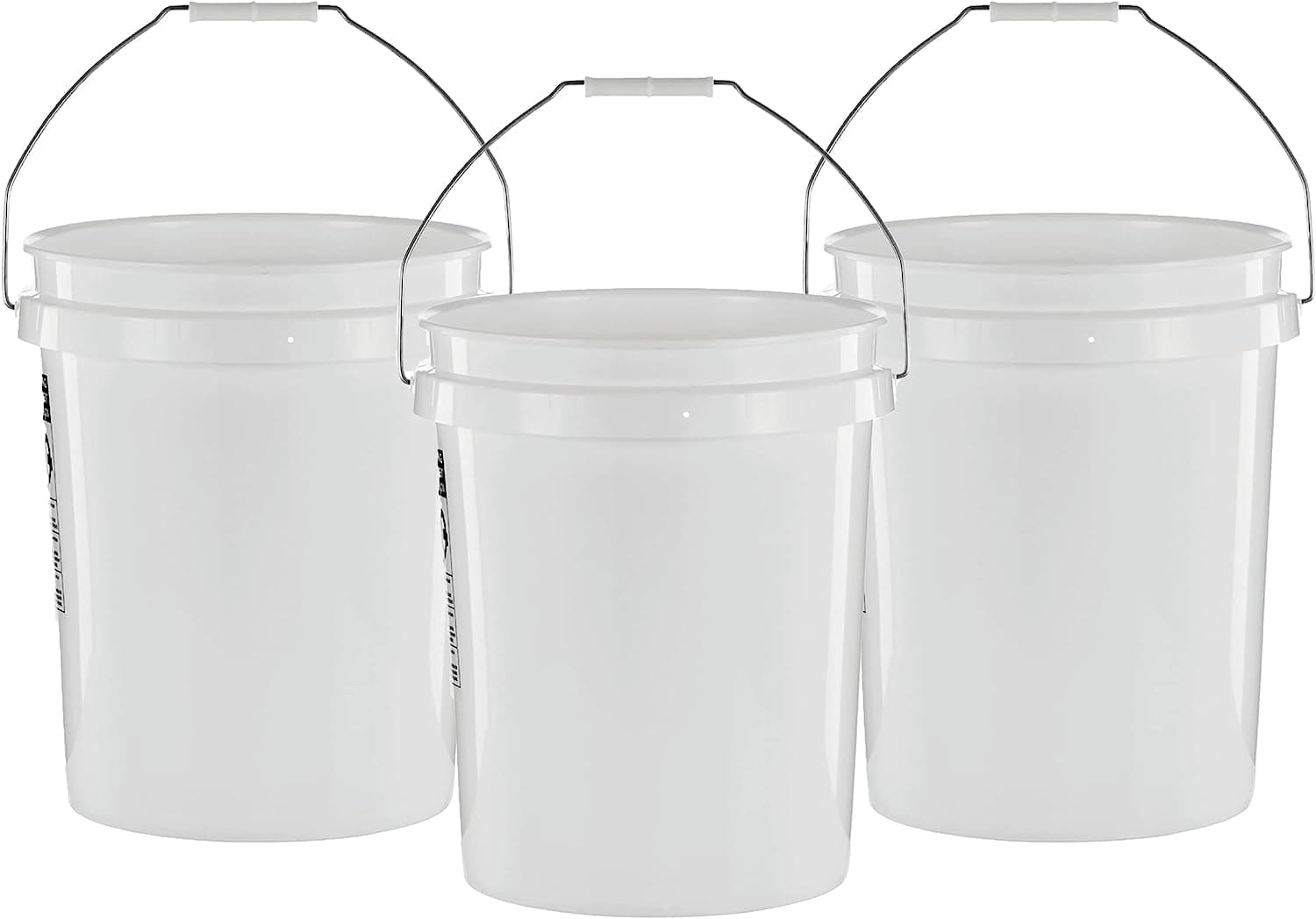
🛒 Shop for Reliable Buckets on Amazon
5. Magnifying Glass: Every detail counts!
Description: These tools are invaluable for examining potential finds up close. They allow miners to identify subtle details, distinguishing valuable gemstones from common rocks.

🛒 Grab Your Magnifying Glass on Amazon
6. Guidebooks and Field Guides: Knowledge at your fingertips.
Description: A comprehensive field guide to Washington’s minerals and gems can be an invaluable asset. It assists in identifying finds on the spot and provides insight into where specific minerals might be located.

🛒 Discover the Best Field Guides on Amazon
7. Containers and Bags: Organize, store, and flaunt your finds.
Description: Carry a durable bag or bucket to store your finds. Small containers or envelopes can be handy for fragile or smaller specimens, ensuring they don’t get damaged.

🛒 Shop for Storage Solutions on Amazon
8. First Aid Kit: Better safe than sorry!
Description: Given the nature of gem mining, minor injuries like cuts or scrapes are possible. A basic first aid kit, equipped with antiseptics, bandages, and pain relievers, is a must-have.

🛒 Secure Your First Aid Kit on Amazon
Being well-prepared is fundamental to any successful gem mining endeavor in Washington. By investing in the right tools and equipment, you can maximize your experience, ensuring both safety and a rewarding haul.
Tips and Tricks for Successful Gem Mining in Washington

While the allure of unearthing gleaming gemstones is undeniable, successful gem mining in Washington requires a blend of patience, preparation, and local knowledge. Whether you’re a seasoned rockhound or a budding enthusiast, these tips and tricks will optimize your mining endeavors:
- Research Your Destination: Before setting foot in a mining area, familiarize yourself with the specific gems and minerals native to that region. Knowing what you’re likely to find will help you recognize potential gems more easily.
- Join a Local Gem Club: Washington boasts several gem and mineral societies. These clubs offer field trips, workshops, and a wealth of collective experience. Newcomers can benefit immensely from the guidance of seasoned members.
- Time Your Visit Right: While some locations are accessible year-round, others might be best visited during specific times. For example, riverbed mining is often more productive after spring thaws or heavy rains, which can uncover new gem deposits.
- Observe the Land: Nature offers clues. Gem-rich veins might be associated with specific rock formations or geological features. Understanding and recognizing these can point you in the right direction.
- Prioritize Safety: Never venture into mining areas alone. Ensure someone knows your whereabouts, and always be aware of your surroundings. Some regions might have unstable terrains, so exercise caution.
- Mind the Ecosystem: While you’re focused on the ground, remember the broader environment. Avoid disrupting natural habitats or causing erosion. Leave no trace behind, packing out everything you bring in.
- Practice Patience: Gem mining is as much about the journey as the destination. Some days might be bountiful, while others could test your patience. Enjoy the experience and the connection to nature.
- Seek Out Local Expertise: Local rock shops, guides, or even fellow miners can be a treasure trove of insights. They can offer tips on specific areas to focus on or even share stories of recent finds.
- Care for Your Finds: Once you’ve unearthed gems, handle them with care. Some might be fragile or require cleaning. Familiarize yourself with the best practices to ensure your treasures remain intact.
- Stay Updated: Gem mining regulations and access permissions can change. Before every trip, make sure you’re updated on the latest rules, ensuring a hassle-free experience.
Remember, gem mining in Washington is not just about the coveted finds but also the enriching experience of connecting with nature, understanding geology, and sharing adventures with like-minded enthusiasts. Embrace the journey, and the gems will follow.
Handling Your Gemstone Finds

Once you’ve unearthed the hidden treasures that Washington’s terrains have to offer, the journey of your gemstones is just beginning. Proper handling, cleaning, and storage are crucial to showcasing their natural beauty and ensuring they remain in pristine condition.
- Immediate Handling: Handle your finds with care. Some gemstones can be fragile or may have natural cleavages that make them prone to splitting. Using soft cloth bags or padded containers during transport can prevent accidental chipping or damage.
- Cleaning: The method of cleaning largely depends on the gemstone’s type and hardness. While most stones can be safely cleaned with mild soap and water, avoid using harsh chemicals or abrasive materials. For softer minerals, a soft brush can help remove dirt without scratching the surface.
- Storage: Store gemstones separately to avoid potential scratches or damage. Soft cloth pouches, padded boxes, or compartmentalized containers are ideal. If you’ve found a particularly valuable or delicate specimen, consider specialized gemstone storage solutions.
- Displaying: Showcasing your finds can be rewarding. Depending on your preference, shadow boxes, glass-fronted display cases, or even making them into jewelry are popular options. Ensure that the display environment doesn’t expose the gemstones to prolonged direct sunlight, which can fade some minerals.
- Documentation: Maintaining a record of your finds can be invaluable. Note down the date of discovery, location, and any unique characteristics. This not only helps in identification but also adds a personal story to each gem.
- Identification: If you’re unsure about a gemstone’s identity, consider consulting a gemologist or experienced rockhound. Local gem and mineral clubs often have members skilled in identification.
- Valuation: For gemstones that you believe might be of significant value, getting a professional appraisal is wise. This can be essential for insurance purposes or if you consider selling your find.
- Conservation: Some gemstones, especially those with inclusions or internal fractures, may benefit from stabilization processes. If you plan to keep a valuable specimen for a long time, consult experts about potential conservation methods.
- Learning and Upgrading: As you grow in your gem collecting journey, continuously educate yourself. Advanced tools and techniques can help in better handling and showcasing your treasures.
- Share and Celebrate: One of the joys of gem hunting is sharing stories, experiences, and finds with fellow enthusiasts. Consider attending gem shows, joining online forums, or even hosting a small gathering to showcase your collection.
Handling gemstones with respect and care is a testament to the value of the treasures the earth bestows upon us. By following best practices, your finds from Washington can bring joy, fascination, and pride for years to come.
Famous Gemstone Finds in Washington
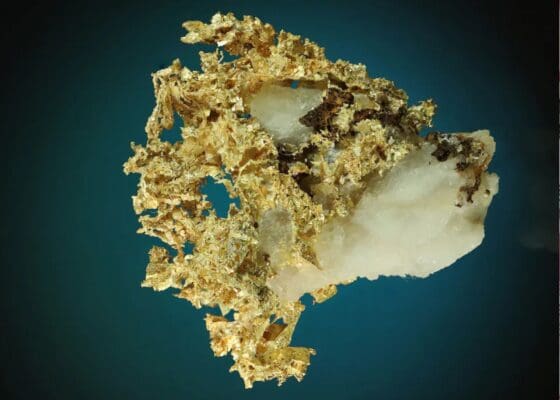
The gem-rich terrains of Washington have been generous over the years, revealing remarkable gemstones that have not only garnered attention but have also woven themselves into the rich tapestry of the state’s mining history. These stories serve as inspirations for every gem enthusiast venturing into Washington’s wilderness.
- The Liberty Gold Crystals: Liberty, Washington, is renowned for its unique, naturally occurring gold crystals. Unlike the typical nugget, these are crystalline structures that are rare and highly prized by collectors. Several sizable specimens have been discovered over the years, making them a hallmark of Washington’s mineral legacy.
- The Ellensburg Blue Agates: These stunning blue agates are exclusive to the Kittitas Valley near Ellensburg. Recognized for their deep, captivating blue hue, these agates have become synonymous with Washington gem hunting. Notable large and perfectly colored specimens have been discovered, increasing their allure among collectors.
- The Twin Sisters Dunite: Near Mount Baker lies an area known for its olivine deposits, especially in the Twin Sisters Mountain range. Some of the purest dunite (a rock largely composed of olivine) can be found here. The gem-quality olivine, better known as peridot, has made notable appearances from this region.
- Red Top Garnets: The Red Top Mountain near Cle Elum has been a favored spot for those seeking garnets. Over the years, several substantial and high-quality garnets have been found, further establishing Washington’s reputation as a gem treasure trove.
- The Hallelujah Junction Amethyst: Though Hallelujah Junction is more associated with Nevada and California, its presence in Washington’s gem lore can’t be overlooked. Remarkable specimens of deep purple amethyst clusters have been recovered, making them a highlight in many gem collections.
- Rare Jade Finds: Nephrite jade discoveries in Washington have contributed to the state’s fame in the gem world. Specific finds, particularly those with deep, translucent green shades, have been noteworthy for their size and quality.
- Historic Fossils: While not gemstones in the traditional sense, Washington’s fossilized tree resins, or amber, contain ancient insects and organisms, capturing moments from millions of years ago. These time capsules are revered by collectors and scientists alike.
- Opal Enthusiasm: Washington has yielded several opal finds over the years. The presence of fire opals, characterized by their fiery play-of-color, has been a spectacular addition to the state’s gem contributions.
These famous finds, besides being a testament to Washington’s mineral wealth, serve as captivating tales for every gem enthusiast. They remind us of the treasures that lie beneath, waiting for the right moment and the keen-eyed explorer to bring them to light.
Additional Gem Mining Opportunities
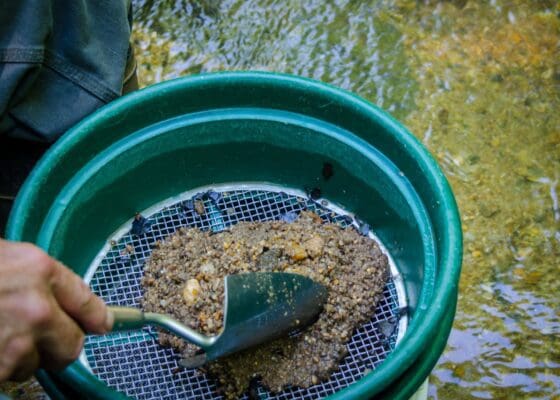
Exploring Washington’s wealth of gemstones can be a captivating adventure. However, the Pacific Northwest and its surrounding states offer more gem mining treasures for the enthusiastic rockhound. Here are neighboring states where you can continue your gem-hunting journey:
- Oregon Gem Mining: Just south of Washington, Oregon boasts a plethora of gemstones, including sunstones, opals, and thunder eggs (state rock) laden with agates or quartz.
- Idaho Gem Mining: Known as the “Gem State,” Idaho doesn’t disappoint. Renowned for its garnets, opals, and star garnets (state gem), Idaho offers fruitful ventures for miners.
- Montana Gem Mining: Montana, the “Treasure State,” is famed for its sapphires, especially from the Yogo Gulch. Additionally, agates and garnets are abundant here.
- British Columbia (Canada) Gem Mining: Heading north into Canada, British Columbia presents opportunities for jade, opals, and gold. The province is especially famous for its nephrite jade deposits.
- California Gem Mining: Venturing further south, California’s diverse geological terrains are abundant in tourmaline, turquoise, garnets, and even diamonds from certain volcanic sources.
Each of these states, like Washington, provides a unique gem-hunting experience shaped by their geology, history, and local communities. Delving into these regions can only expand and enrich your appreciation for the bounties hidden beneath our feet.
Unearth the best gem mining spots and tips with our Gem Mining Near Me guide.
Embracing the Gem Mining Adventure, Anywhere
Washington’s captivating landscapes have been an irresistible siren call for gem enthusiasts. The thrill of discovery, the connection with nature, and the intricate stories each gem whispers make gem hunting in Washington a truly unique experience. The allure lies not just in the tangible treasures unearthed but also in the moments of wonder, patience, and excitement that punctuate every expedition.
But what if the thrill of gem hunting could be experienced from the comfort of your home? Enter the gem mining kit—an ingenious solution for those who can’t always venture outdoors, or for budding rockhounds taking their first steps. This kit brings the world’s gems to your doorstep, allowing you to sift, discover, and marvel at a curated selection of gemstones and minerals. While there’s undeniable charm in Washington’s rugged terrains, with a gem mining kit, the adventure truly knows no bounds.

